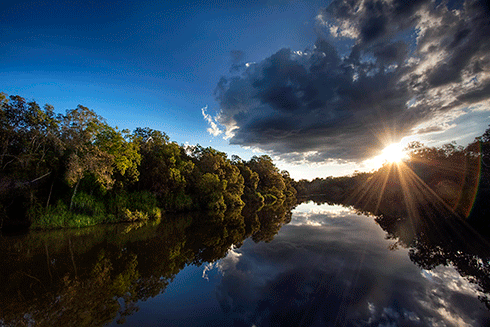
|
Published: 15 December 2014
Ten-year plan to save Kakadu’s threatened species gets federal support
Kakadu National Park in the Northern Territory is blessed with a rich biodiversity that includes 75 threatened species – probably more than any other conservation reserve in Australia. Now, an ambitious new strategy has been launched with the hope of stemming the further decline of these species.

|
|
A river flows through Kakadu National Park, where the main threats to biodiversity are inappropriate fire regimes and predation by feral cats. Credit: Flickr/Chris Ford CC BY-NC 2.0
|
The Kakadu Threatened Species Strategy was commissioned by Kakadu National Park and developed by the National Environmental Research Program (NERP) Northern Australian Hub, with input from Parks Australia.
The new approach will fine tune Kakadu’s management structure and seek to involve traditional owners.
The plan prioritises the plants, invertebrates, fish, reptiles, birds and mammals at risk of extinction in the World Heritage-listed park. The main threats are inappropriate fire regimes and predation by feral cats.
Lead author and wildlife expert Professor John Woinarski has been working in Kakadu for the past 20 years.
‘It was one of the greatest spots in Australia to be a zoologist, but over the course of the last 20 years a large proportion of that fauna has just crumbled,’ he says.
‘What we’re trying to do now is reverse that, to provide hope, and to ensure those species that have declined catastrophically in Kakadu can recover.’
The Federal Government recognised the importance of urgent action and has committed an extra $750,000 to begin work on the 10-year strategy immediately.
The investment will deliver four priority projects, including intensive work to target threats from fire, weeds and feral animals, as well as the creation of a wildlife refuge on Gardangarl (Field Island).
‘It’s not just lip service. The strategy and the actions in the strategy are being implemented and properly resourced. If this continues, then the future of Kakadu and its extraordinary biodiversity will be secured,’ Professor Woinarski says.
Source: National Environmental Research Program (NERP)



